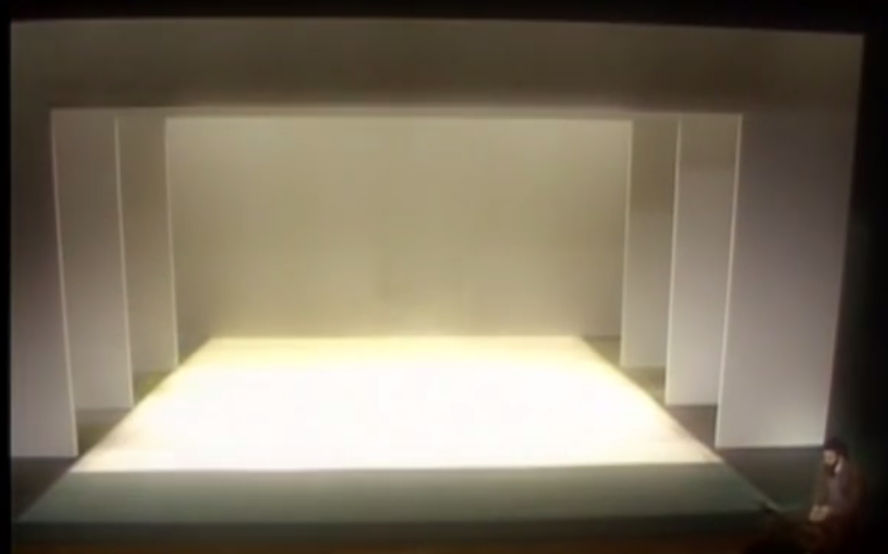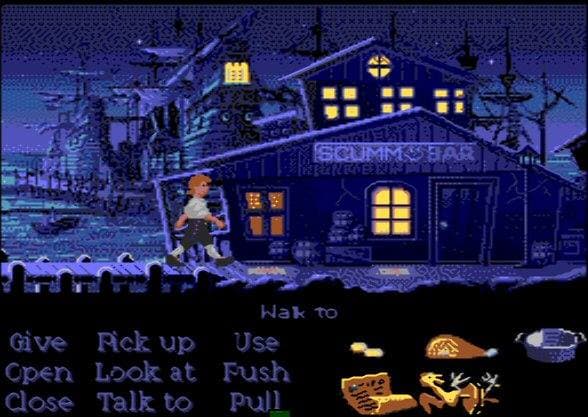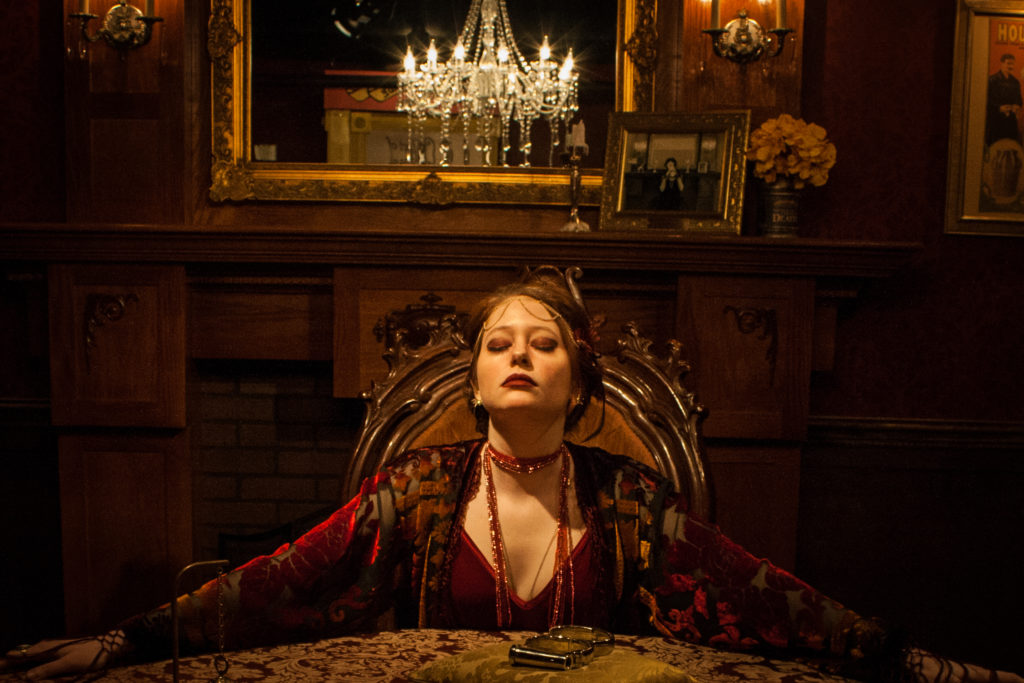Tonight at 8 PM, Strange Bird Immersive celebrates its 100th performance of The Man From Beyond: Houdini Séance Escape Room.

Okay, so on the escape room side of things, established companies call this milestone “July.” We’re kind of just getting started. But for a regional theatre production to hit 100 shows is kind of a big deal. Like, there’s Broadway. And then there’s Silos Studio #213.
I am indebted to immersive theatre for this gift. With small audiences and a memorable, active experience driving word of mouth from 0 to 60, I am living in Houston what most actors can only dream of: performing in a long-running show. How cool is that? And I’m even being paid from ticket sales.
Here are some things I’ve learned along the way, both from the immersive theatre and the escape room sides of my brain.
100 IMMERSivE THEATRE SHOWS LATER…
- There’s nothing like total confidence inside a show. Most plays I’ve done spend about 3 weeks in rehearsals for 16 performances—it’s fast. There’s all sorts of riches I can pay attention to when the routine of the performance comes naturally.
- You’d think I’d have some set line readings by now. But every audience inspires new impulses, and every night I have new insight. And this ain’t even Shakespeare.
- Performing doesn’t get old when your scene partner is brand-new, wide-eyed, and excited every time. I can’t speak to what it would be like to be stuck inside 100 shows of Sunday in the Park with George (my favorite musical), but I’m always eager for my next immersive show. It really is different every time.

- The reality of the moment is holier than the script. When in conflict, let reality win.
- Every audience is perfect—whatever they give you is their truth. Respond to it.
- Even if they avoid eye contact, even if they run away from you, don’t take it personally. That’s just them. Work with what happens.
- It is so, so easy to fall in love in immersive theatre. I knew that was true from one side, but it’s true for the performer, too. There’s something in this work that accelerates intimacy and reveals souls. It’s magic.
- If Meisner theory excites you, get thee to an immersive theatre. That’s where things will really take off.
100 Escape rooms Later…
- People respond to things consistently. The behaviors we’ve seen are all very similar, which means you can successfully design for a particular response. This is great news for every experiential designer. It means you can iterate—even the slightest adjustment can change behavior. Instance: we have a very interesting box in the room, but lots of folks were missing seeing the key hole, to the point that I had to run a hint. We added a tiny handle on top of the box to suggest that it opens, and now that hint has disappeared. So if people are responding in a way you hate, you can, in fact, fix it.
- Paper will last without lamination for at least 90 games. Only laminate it if it would be laminated in the world, please.
- People don’t want to break your things. Desperate players at the ends of their ropes combined with a negligent game master are who break things.
- Providing a hint deprives someone of a hero moment. Use only when necessary.
- Providing a hint is your best tool for curbing player frustration, keeping the experience fun, and protecting the investment of your room. Use liberally.
- Your immersive theatre verisimilitude is your escape room red herring. There are soooo many details I would add if doing so wouldn’t hurt the game. That sucks. It’s hard to do both.
- In the current escape room climate, there is nothing you can do as a designer to earn the trust of your players. Players who are new to escape rooms are our best players: they quickly learn that they can trust the design to make sense. But I can easily identify my experienced player: he checks under every chair, he wants to disassemble framed photographs (instead of looking at them), he has an unhealthy fixation with the one 4-digit combo lock and will plug in any random number he can make up in the room until it opens.
If you’ve played a few escape rooms before, you know he’s actually behaving logically. I do the same thing when I play. Sometimes the clue trail is deficient or missing, wild guessing works or is even required, and a weird, twisted “escape room logic” prevails, where numbers under chairs unlock a treasure chest full of Cardan Grilles in the serial-killer basement. What is this, Monkey Island?

Winning most escape rooms is not about being smart but about being methodically crazy. It’s NOT these players’ fault they don’t approach our room logically: they have no precedent for trusting a game designer. With any luck, they’ll leave realizing what a revelation it is to play a game that makes complete sense, and then demand it everywhere else they play. Right? Alternatively, it’s possible that escape rooms will ruin immersive theatre, creating hordes of people whose learned instinct in immersive environments is to turn over all the furniture instead of engaging with a story. A disconcerting but very real possibility. We’ll see what happens next.
but most of all…
- Craft a detailed experience. People will notice. Asking why in every step of the design process, whether immersive theatre or escape room, isn’t just good art. It’s good business. Sure, your audience may not notice that all the antique items feature period-appropriate slotted screws, but they will certainly not be surprised to hear that that’s what you did. They sense the spirit of the details in every nook and cranny.

- And that’s a spirit worth summoning 100 times.



👏👏👏Monkey Island reference! Great article! Here is to 100 more! 🥂